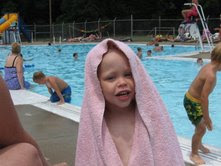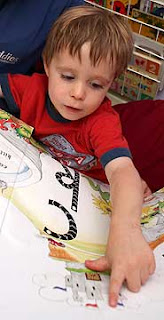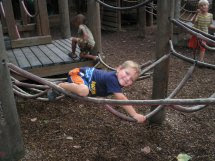From Teacher Magazine
Comment: last night our faculty met at Angelo’s for a spectacular dinner party. We discussed the upcoming year and how much we are all looking forward to teaching. Our classes are small and the students are A+. This morning when I read the article that follows, I thought how much each teacher embodies all these five points. It doesn’t matter if you are teaching three year olds or college kids. Teaching is a work of the head that is delivered by the heart. If you want to see what it’s like from a positive insider’s point of view, read on.
Teaching Secrets: Five Tips for the New Teacher
As the average birth year of our school faculty begins to dip below the year I began teaching, it becomes apparent that I am what some would consider an “experienced teacher.” That and my tendency to repeat myself. It occurred to me not long ago that there are expressions I use over and over when giving advice to beginning teachers. Here, in no particular order, are some possibly useful maxims from Ms. Rigsbee’s Guide to the Teaching Life.
1. Hit the floor running and breathe when you leave.
I have always been one of the first teachers to pull into the parking lot in the mornings. Getting to work a good 20 to 30 minutes before the “official” start time is necessary for me. First of all, it gives me time to think quietly about my day. Also, it alleviates the problem of standing in line at a copy machine (or finding a jammed copy machine that was left blinking wildly by a teacher who didn’t attempt to fix it). After the copies are made, the agenda and goals are on the board, and the room is ready, there’s time for nice adult conversations (there may not be another opportunity until after school) and opportunities for relationship building as students arrive.
I understand there are “circumstances.” The year my chronically oversleeping son was a senior in high school, I had to fly into the school parking lot on two wheels every morning just as the second hand on the office clock was announcing I was late. So I do know it may be difficult to arrive as dawn breaks. But the earlier the better, so you can begin the day relaxed and ready.
Relaxed and ready is also the way to end the school day. I tell beginning teachers to beware of the 3:30 Club. Never get between them and the door at 3:30 (or whatever time school is out for you). I prefer to take my time in the afternoons, look over some lesson plans, straighten up my classroom from the day’s activities, and get ready for tomorrow. Also, I like to wander around the school to see what my students are up to. There’s nothing better than grading a few papers outside on the bleachers on a warm fall afternoon during football practice. My students, who should be paying attention to their coaches, always wave wildly when they see me (like they didn’t just see me in class 30 minutes before).
The “breathe when you leave” part? That means teachers need to take care of themselves and relax during their hours out of school. This doesn’t mean they can’t grade the occasional paper or do schoolwork. For me, it’s very relaxing to do my lesson plans on Sunday afternoons, turn on some professional football and plan the week. But this routine may not work for some teachers. I tell new teachers to figure out what works for them, but to make sure to breathe.
2. Always remember, the show must go on.
I have always said teaching is a performance. Standing in front of (or facilitating around) a classroom of kids of any age requires energy and enthusiasm. We don’t work behind a computer screen at a desk all day, so we can’t just slump in our seats if we feel like it. There have been many days in my career when I have looked at the clock to see that it was time for my next group to come to me. “I can’t do it,” I would think. But I would take a deep breath, put a smile on my face (it’s OK if it’s fake at first), and start slapping some fives when those kids entered the room. Pretty soon their energy level would match mine, my smile would be real, and we would take it from there. The idea is to prepare ourselves for the “audience” and be the best we can be when we’re with them. Our students deserve no less.
3. Put on your cheerleading uniform.
Yes, we have to encourage and inspire. We know that. Some of our students come to us from dismal situations. I often wonder how some of them can even put one foot in front of the other to get to the bus stop. But they do, and while they’re with me, I’m going to do what I can to make their school day the best it can be.
But I’m not only talking about students. We need to cheer each other on, too. Schools can be toxic places. The job is stressful, and hopefully we aren’t complaining to kids all day. So when teachers get together, there can be some “venting.” That’s when I put on my metaphorical cheerleading uniform and go at it. Don’t worry—I don’t act like Little Mary Sunshine. I do understand, and many times agree with, the complaints that are discussed in team rooms and school hallways. But I do try to put a positive spin on things if I can.
Also, I feel strongly that it’s important to be cheerleaders for our profession. I am weary from hearing “if you can’t do … teach” and other misrepresentations of what we do every day. We have to market ourselves as the professionals we are. Some folks have the idea that teachers are still Charlie Brown’s wa-wa-wa-ing lecturers, whacking kids with yard sticks if they misbehave. But we know real teachers are committed professionals who believe in purposeful instruction and who have our students’ best interests at heart. As we speak to others, in the grocery store or by the neighborhood pool, we must embody that professionalism—not fuel the negative fires that surround so many schools.
4. If you make them the enemy, you will lose.
The rest of this expression goes like this: There are more of them, and they have an audience. As a middle school teacher, this is one saying that I share with teachers often. Teaching cannot be an “us” and “them” situation. In the community of a school, we are all family, and when the students know this (and feel this), they are much more likely to cooperate, be pleasant, and learn.
If, instead, they are aware of the animosity a teacher feels toward them, they will push back, and it probably won’t be pretty. Being in this school thing together is much more productive and much less stressful. A student on your side can be the difference between loving your job and dreading getting up in the morning. Do what needs to be done to ensure they’re on your side—and it’s mostly about being on theirs.
5. Don’t hide your light under a bushel.
I can’t take credit for this one. I believe it was mentioned in the Sermon on the Mount. It was also mentioned by my Mama about once a week as I was growing up. Basically, it means “don’t hide your talent.” I share this one with new teachers as I encourage them to use their talents, even some that aren’t so obvious, to make their teaching experience more enjoyable.
For example, I love to write poetry. I’m not a published poet, but I don’t need to be. I have a captive audience every day. By sharing my poetry and bits of my personal life, I’m able to connect to my students in a way that may be difficult otherwise. Some teachers use their athletic talents to inspire students; I’ve worked with two Ultimate Frisbee playing teachers (in two different schools) who have taught their students these skills while at the same time teaching teamwork and perseverance. One of my dearest teacher friends teaches math and clogging at the same time. (And if you don’t know what clogging is, check it out on YouTube!)
Another way I hope new teachers will shine their lights is by marketing themselves as professionals. Each parent who has a child sitting in a classroom should know the credentials that got that teacher there— college degrees, honors and awards received, types of experiences (not necessarily years of experience but types—has the teacher worked with different grade levels before or taught other subjects?). I believe teachers should have a pamphlet ready to hand to classroom visitors that includes all of your career highlights.
There are a few other expressions I throw out now and then. For example, “He is the boss of you” is one I use when teachers are complaining about the principal’s expectations. But that’s a story for another day. For now, I’ll just look back over the years I’ve been teaching and wonder when I stopped asking so many questions and somehow got so old that I started answering a few.





